Risk is inherent in project management and so is the need to create a risk management plan to control it. That methodology is called risk management, which is as important as planning to make sure a project comes in on time, within budget and of quality.
The better a project manager identifies and responds to risk, the better the outcome. That’s why there are never enough project tools and techniques to have at your disposal when planning for a project.
Why Use Risk Management Tools and Techniques?
Risk management tools and techniques are essential for managing risk in projects across multiple industries. They help to improve risk identification through a systematic approach and comprehensive coverage. It also enhances risk assessment by prioritizing and doing quantitative analysis.
Using risk management tools and techniques leads to effective risk response planning through structured strategies and contingency planning. There’s also the benefit of improved communication, with clear documentation and stakeholder engagement.
Project Risk Management Software
Project management software greatly helps with the process of identifying and tracking project risks by integrating some of the risk management tools mentioned with other project management features like Gantt charts, kanban boards and project dashboards.
1. ProjectManager
Whichever of the risk management tools or techniques you use, they are exponentially helped when using ProjectManager. Having the risk assessment and tracking tool in your larger project management software keeps everything under one roof and accessible to the whole project team. With ProjectManager, you can upload your spreadsheet of risks and turn it into a project, which can be assigned and tracked.
Manage Risks in Real Time With ProjectManager
Use ProjectManager’s risk management features to identify, track and resolve project risks. You can create detailed risk cards that allow you to describe your risks, estimate their impact and likelihood, set a priority level and plan a response for each of them.
Assign risks to your team members, share files, tag risks by categories and collaborate with your team in real time as you resolve your risks. Set the risk status as open or closed and use the dropdown menu to avoid, mitigate, transfer or accept the risk. You can keep track of the risk in real time by monitoring it on the project menu.

Use Workflow Automation Features to Trigger Instant Risk Alerts
With ProjectManager, you can create automations to alert key people on your team when risks escalate or deescalate. Set simple yet powerful rules with our system, triggering notifications if costs, timelines or other project statuses fall off schedule.

ProjectManager has all of the risk management features that you need at an affordable price point, so it stands out on our list of the top project risk management software options. Click here to start a free 30-day trial.
2. Monday.com
Monday.com is an easy-to-use project management software that offers basic project planning, scheduling and tracking tools. In terms of risk management, it allows you to identify risks for your projects on a simple list interface.
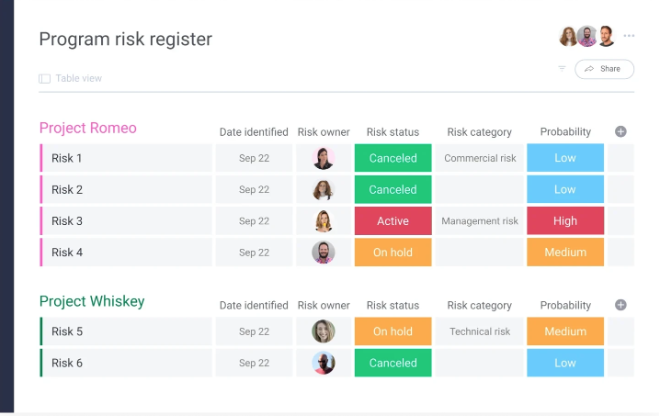
Monday.com’s risk management view allows you to identify your project risks, assign them to a risk owner, create risk category tags and estimate their likelihood, impact and costs.
3. nTask
nTask is a project management software that offers several risk management features that will help you identify project risks, track their status, plan risk responses and monitor the progress of any risk mitigation strategies.
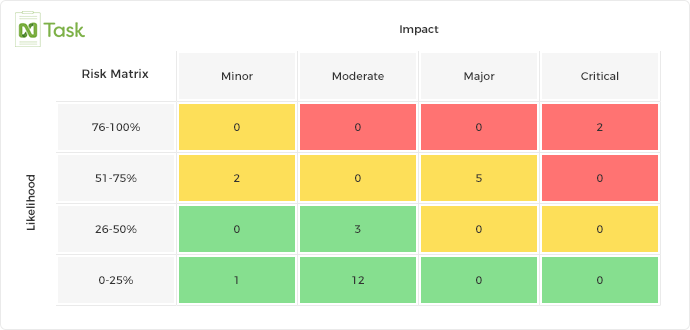
Its main risk management feature is the risk matrix tool, which allows you to get a high-level view of your project risks and visualize any issues that have occurred along with their causes, consequences and recovery measures.
4. Microsoft Project
Microsoft Project doesn’t have any built-in risk management features, but it can still be used to track project risks by manually configuring its Gantt charts following a similar process as when working on Microsoft Excel spreadsheets.
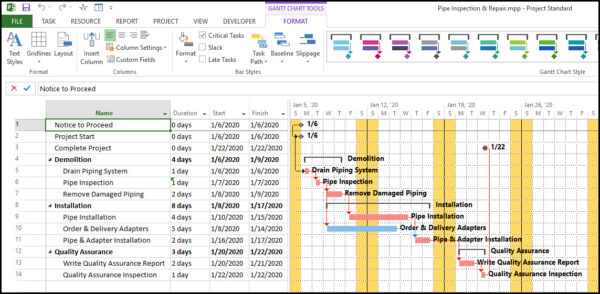
To do so, you’ll need to add columns and formulas to the Gantt chart spreadsheet to track the probability, impact and priority level of each risk. This makes Microsoft Project a viable tool for tracking project risks, but unfortunately, the setup process can be hard for most users.
5. StandardFusion
StandardFusion is a dedicated GRC platform built for scalable risk management. It enables project managers to assess, evaluate, and mitigate risks by automating and centralizing risk processes that align with broader, organization-wide goals.
The main benefits of StandardFusion are that it can be used for streamlining complex project risk management and ensuring processes align with the wider company GRC (Governance, Risk, and Compliance).
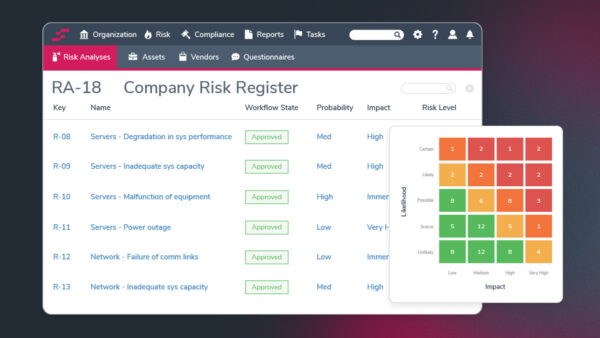
Project managers can create customizable risk methodologies and integrated workflows to get a comprehensive view of project risk requirements and insights into how well projects are protected against potential setbacks.
6. Resolver
Resolver is a risk management software that’s designed to help with enterprise risk management. It offers tools like risk registers, risk matrices and risk tracking reports to identify, prioritize and mitigate risks that might affect the operations of your organization.
The main advantage of this software is that it has robust data analysis capabilities. It offers data warehousing, analytics, business intelligence and automated reporting tools, which allow organizations to make data-driven risk management decisions.

Risk management software is the most powerful tool you can use to manage your project, business or organizational risks. But, if you’re not ready for risk management software, you can begin by using one of these risk management tools and techniques.
Risk Management Tools & Techniques
The following are some of the best risk management tools and techniques that professional project managers use to build risk management plans and guard against inevitable risks, issues and changes.
1. Risk Management Plan Template
A risk management plan template is used to identify, assess and control threats to a project. Using a risk management plan template gathers all the pertinent information one needs to identify and mitigate risks in one place. This ensures that nothing gets lost and protects the project from risk as thoroughly as possible.
2. Risk Register
The fundamental risk management tool is the risk register. What a risk register does is identify and describe the risk. It then will provide space to explain the potential impact on the project and what the planned response is for dealing with the risk if it occurs. Furthermore, the risk register allows a project manager to prioritize the risk, assign an owner responsible for resolving it and give a place to add notes as needed.
The risk register is a strategic tool to control risk in a project. It works to gather the data on what risks the team expects and then the way to respond proactively if they do show up in the project. It has already mapped out a path forward to keep the project from falling behind schedule or going over budget.

3. RAID Log
RAID stands for risks, assumptions, issues and decisions. A RAID log is used during the planning stage of a project but carries through to the execution phase as well. It identifies and tracks risks, assumptions and decisions. This allows the project team to manage these risks and assumptions during the decision-making process.
4. Risk Breakdown Structure (RBS)
A risk breakdown structure is a hierarchical framework that categorizes risks associated with the project. It helps project teams systematically identify, assess and manage risk by breaking them down into small, more manageable components.
5. Root Cause Analysis
The root cause is another way to say the essence of something. Root cause analysis is a systematic process used to identify the fundamental risks that are embedded in the project. This is a tool that says good management is not only responsive but preventative. Get started with our free root cause analysis template.
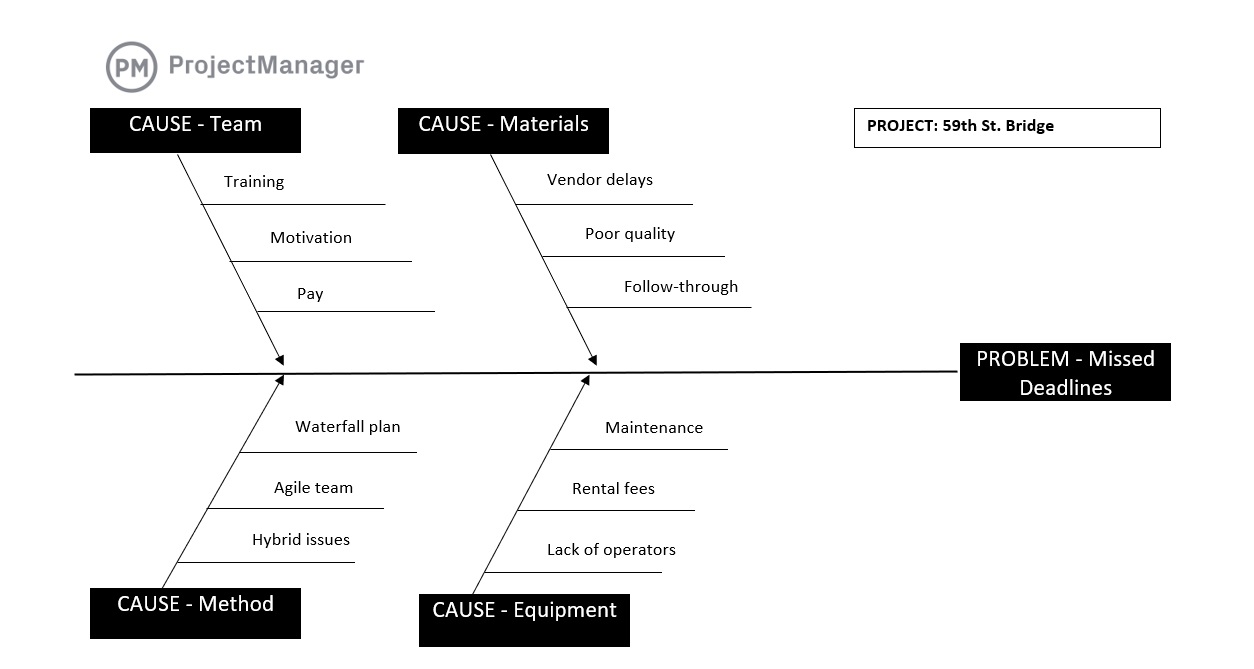
Often root cause analysis is used after a problem has already come up. It seeks to address causes rather than symptoms. But it can be applied to assessing risk by going through the goals of any root cause analysis, which asks the following questions:
- What happened?
- How did it happen?
- Why did it happen?
Once those questions are addressed, develop a plan of action to prevent it from happening again.
6. SWOT
SWOT, or strengths, weaknesses, opportunities, threats, is another tool to help with identifying risks. To apply this tool, download our free SWOT analysis template and go through the acronym.
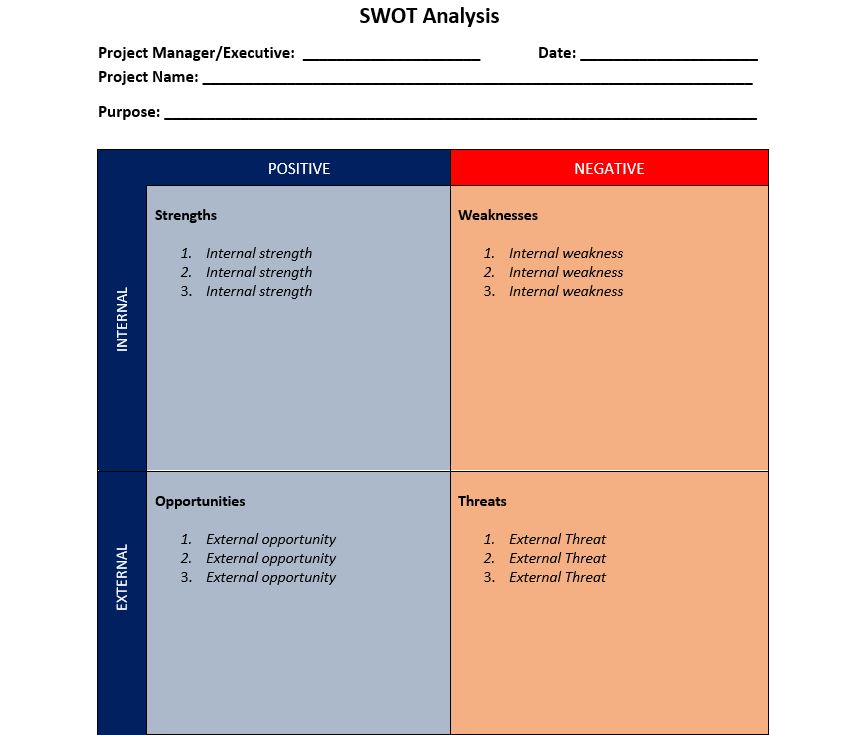
Begin with strengths and determine which aspects of the project are secure and well-positioned. Next, list the weaknesses or things that could be improved or are missing from the project. This is where the likelihood of negative risk will raise its head, while positive risk comes from the identification of strengths. Opportunities are another way of referring to positive risks and threats are negative risks.
When collecting SWOT, illustrate your findings in a four-square grid. The top of the square has strengths to the left and weaknesses to the right. Below that are opportunities to the left and threats to the right. The left-hand side is helpful to achieving the objective of the project and those on the right-hand side are harmful to achieving the objective of the project. This allows for analysis and cross-reference.
7. Risk Assessment Template for IT
While this tool was developed for IT projects, it can be expanded to apply to any project. What an IT risk assessment template offers is a numbered listing of the risks, along with the control environment, control activities and any additional pertinent information.
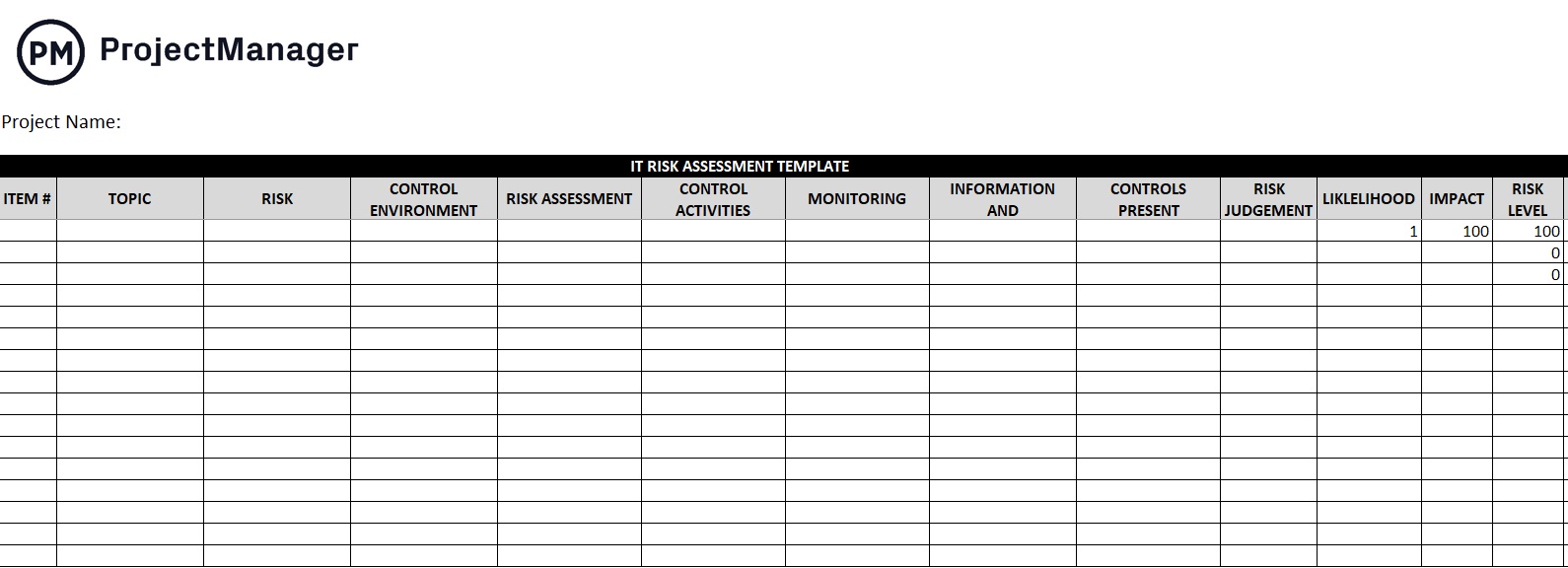
One of the most unique aspects of the risk assessment template is that the spreadsheet has a built-in calculator that figures out the likelihood of a risk occurring and then multiples that against the impact it would have on the project or the organization. This way, a project manager knows the potential harm of the risk and so can prioritize their response to it if or when the risk happens.
8. Probability and Impact Matrix
Another tool for project managers is the probability and impact matrix. It helps prioritize risk, which is important, as you don’t want to waste time chasing a small risk and exhaust your resources. This technique combines the probability and impact scores of individual risks and then ranks them in terms of their severity. This way each risk is understood in context to the larger project, so if one does occur, there’s a plan in place to respond or not. Get started with our free risk matrix template.
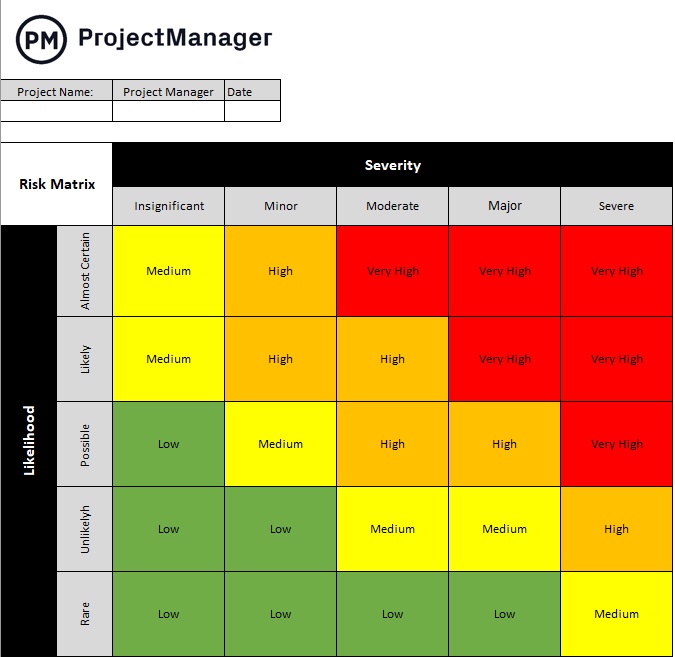
9. Risk Data Quality Assessment
With a risk data quality assessment technique, project managers use data that has been collated for the risks they’ve identified. This is used to then find the level to which information about the risk is relevant to the project manager. It helps the project manager understand the accuracy, reliability, quality and integrity of the risk as related to the collected data about it.
For each risk listed, the risk data quality assessment requires that the project manager determine the extent of the understanding of the risk, collect what data is available, what the quality and reliability are of that data and its integrity. It’s only by examining these parameters of the risk can an accurate assessment be reached.
10. Brainstorming
To begin the brainstorming process, you must assess the risks that could impact your project. This starts with reviewing the project documentation, looking over historic data and lessons learned from similar projects, and reading over articles and organizational process assets. Anything that can provide insight into issues that might occur during the execution of the project. Once you’ve done your research, start brainstorming with anyone who might have insight.
A variant of this is the Delphi technique, which is when a request is sent to experts and they reply anonymously. The project manager can interview experts, team members, stakeholders and others with experience in similar projects.
11. Scenario Planning
Scenario planning is a strategic approach that helps anticipate and prepare for risks in a project. It involves creating detailed narratives about various plausible future scenarios to understand how different factors might affect an organization’s objectives and operations.
12. Fishbone Diagram
A fishbone diagram is a visual tool used in risk management to identify, analyze and categorize potential causes of a specific issue or risk. Its structure resembles a fish skeleton, with a central spine representing the main problem and bones branching out to show various categories of causes.
Risk management is an integral part of how you manage your projects. If you’re interested in trying ProjectManager free for 30 days, sign up for a free trial today.
Related Risk Management Content
We’ve created dozens of blogs, templates and guides that can help you better understand the risk management process in business and project management. Here are a few of them.
- The Risk Management Process in Project Management
- Project Risk Analysis: Tools, Templates & Techniques
- Risk Mitigation in Project Management
- How to Make a Risk Management Plan (Template Included)
- 8 Free Risk Management Templates for Excel
ProjectManager is online project management software that’s suited for every aspect of controlling a project, including managing risk. With kanban boards, risks can not only be identified and prioritized but worked on collaboratively when they arise and resolved before they take a project off-track. See how ProjectManager can help with your risk management by taking this free 30-day trial today.

